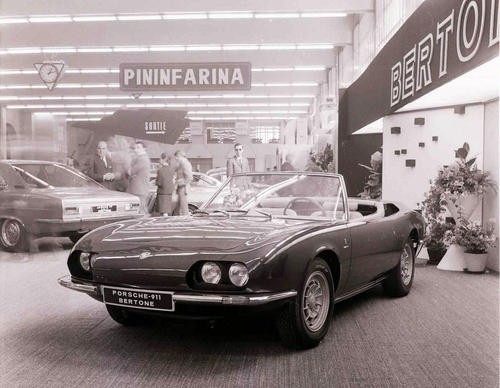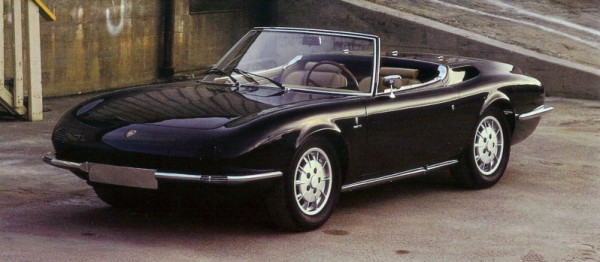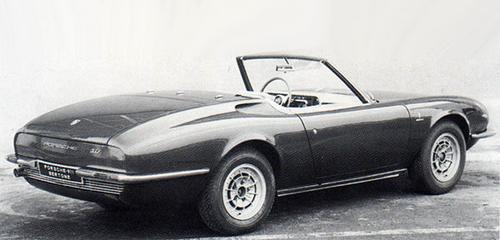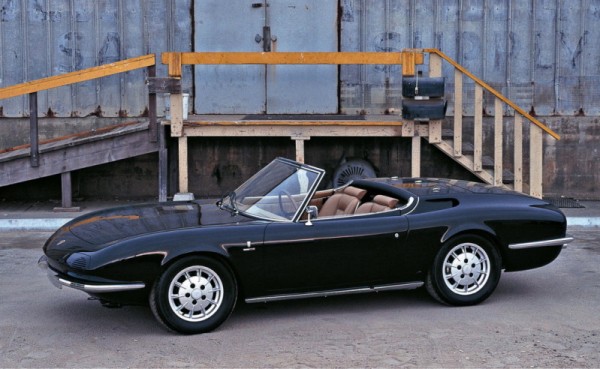Students of marketing understand that a truly successful product is one which fills a gap in the marketplace. Something which answers a question asked by thousands. When 356 production ended and was replaced in the market by the 911/912 pair, nearly everyone wanted to know when Porsche would again produce an open air version of their new sports coupe. Looking to meet this demand, dealer and importer Johnny Von Neumann teamed with Italian design house Bertone to create a drop-top Porsche.

While Porsche was already in works developing the new-for-’66 911 Targa, Von Neumann felt this would not be enough for the fickle and volatile California market (who were pestering him for a roadster/speedster/spyder replacement of some kind). In speaking with Porsche about this problem, Von Neumann was approved for release of a single chassis. This 911 was to be sent to Bertone for engineering and installment, and was to be used as a litmus test. As Porsche’s previous rebody work with Italian firms had left the corporate bigwigs with a bad taste in their mouth, they told Von Neumann that, as their name was on the car, they would have final say on production.

The end result seemed something absolutely spectacular, with the new body looking much more fetching than anything that had come out of Porsche, or in fact Germany as a whole. The car was truly an Italian design, mimicking and improving on contemporary designs from competitors Lamborghini and Ferrari. Even the interior was “Italianized” with the standard gauges moved to the center stack, proper GT cruiser leather seats, the rear seat removed, and a legitimate center console added.

The agreement with Bertone was to produce a single chassis to test the feasibility of mass production for less than a showroom price of $8000 US Dollars. Once done, the car was prepared for the Geneva Auto Show, where it completely stole the stage. Against competition from Jaguar and the spectacular Lamborghini Miura, the Bertone special was seen as the most compelling.

While there was a warm reception for the car in Geneva, and several inquiries, no one placed hard orders or gave any indication of actually purchasing one. The higher-ups at Porsche killed the deal, and Von Neumann was forced to concede that the Targa would be more practical for production at a much lower cost.

Originally displayed with Campagnolo wheels, and in a particularly fetching shade of Carmine Red, the Bertone special wowed crowds. When originally produced the car used a standard 911 2.0 flat six, but with the introduction of the 911S, it received an upgrade to the S specification engine. Sometime during its life it has been reupholstered with a saddle color leather and has been repainted in a lovely smooth black that complements its curves. While it has received several different sets of wheels, notably, steel 904 wheels, and a wide set of Fuchs, the car is most often shown wearing a perfect set of 914-6 Mahle “Gas-burner” wheels.
Other Porsche Blog Posts You Might Enjoy
Porsche Tapiro by Giorgetto Giugiaro
History of the Porsche Design Group
The Mystery of Porsche Chassis 1021
Photos: Porsche and Randy Leffingwell. Source: “Porsche Specials” Lothar Boschen and Jurgen Barth copywrite 1986, as well as “Excellence Was Expected” Karl Ludvigsen.